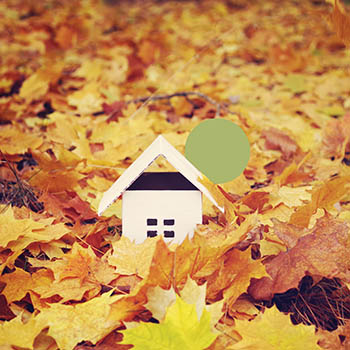No matter what kind of system you have, a heating system checkup by a qualified professional will ensure that it’s operating efficiently and safely before the first cold days arrive.
That checkup should include any portable heaters you may be using. Make sure the cord to the portable heater is in good condition and that the switches and controls are all working properly.
If you use a fireplace or wood stove during the winter, have the chimney cleaned and the flues checked out.
Here are other places around your home and other steps you can take now to help you stay comfortable — and safe — when the leaves and the snow begin to fly.
 Batting up
Batting up
Before the cold weather has a chance to creep through the cracks and crevices around your house, block it out.
Insulating your home is one of the most cost-effective ways to save energy and reduce heating and cooling bills. When it’s properly installed, insulation resists the flow of heat so it doesn’t leave your house in the winter and enter it in the summer. And there’s an added benefit of adding insulation to your home: It’s an excellent sound barrier. A well-insulated house is a quieter house.
This fall, survey your home to see if it needs more insulation. Look beyond your attic and walls. Insulation should be installed in:
- Ceilings with unheated spaces above, including dormer ceilings.
- Knee walls of attic spaces finished as living areas.
- Sloped walls and ceilings of finished attics.
- Cathedral or vaulted ceilings.
- Around perimeters of slabs.
- Floors above vented crawlspaces.
- Floors above and beside unheated or open spaces such as over garages and porches
- Basement walls.
- Interior walls, ceilings or floors where extra sound control is desired.
- Floors over unconditioned basements.
Batten the hatches
Fall is a great time to walk around your home with weather stripping and a caulk gun and reinforce the seals around windows, doors and other openings in walls that can let cold outdoor air into your warm, heated home.
Don’t overlook your attic’s access hatch.
The attic hatch is usually located in a wall or ceiling of a hallway or closet, so it’s sort of “out of sight, out of mind.” But those doorways, which often are attached to pull-down steps, leak huge amounts of air, making your home colder in the winter and hotter during summer.
Before it gets too cold outside, seal and insulate the door.
If your hatch is finished with trim around the edges, gently pull the trim off — being careful not to break it — and pump caulk into holes and gaps in the wood. Caulk sparingly around all edges of the trim, and then reattach it to the door.
Your attic hatch might have a gasket around the edge — similar to the one on your refrigerator door. If yours doesn’t, consider adding one. It can create a tight seal that will keep the unconditioned attic air upstairs where it belongs — and out of your house.
If your attic door is uninsulated, cut a piece of rigid foam insulation so it’s about half an inch smaller than the door on all sides, and glue it to the attic side of the door. Stack another piece of foam on top of that, and then another until the insulation is four to eight inches thick.
Insulation and caulk won’t do their jobs unless the door can close tight. Add a handle and a fastener to the door so it latches securely when closed.
Save money on water heating
Here are three ways to cut your water heating bills.
- Use less hot water. Some tip
- Check for water leaks.
- Wash clothes in cold water.
- Turn down the thermostat on your water heater. It not only saves energy; it can save your family from injury. Lowering the water heater setting to 120 F can prevent scalding. It takes hot water just a few seconds to scald someone.
- Buy a new, more efficient water heater. Newer models are far more efficient than old ones. Choose a water heater with an Energy Star label so you can compare its energy use — and cost — with similar models.
Lighten up for safety
Strategically placing a few lights around your home and yard can help you and your guests find the way to the front door, show off your home after dark, and extend the number of hours you can use your yard and deck.
Some tips to help you lighten up:
- Install lights on both sides and on top of each door so the steps, door, house number and lock are easy to see.
- Aim directional lights away from the front door. Pointing lights at the door can obstruct the view of visitors.
- Uplight trees and line walkways with low-voltage bulbs in weather-proof packages. Buy bulbs and fixtures rated for outdoor use by Underwriters Laboratories.
- Add safety lighting to the driveway and yard with spotlights and floodlights.



